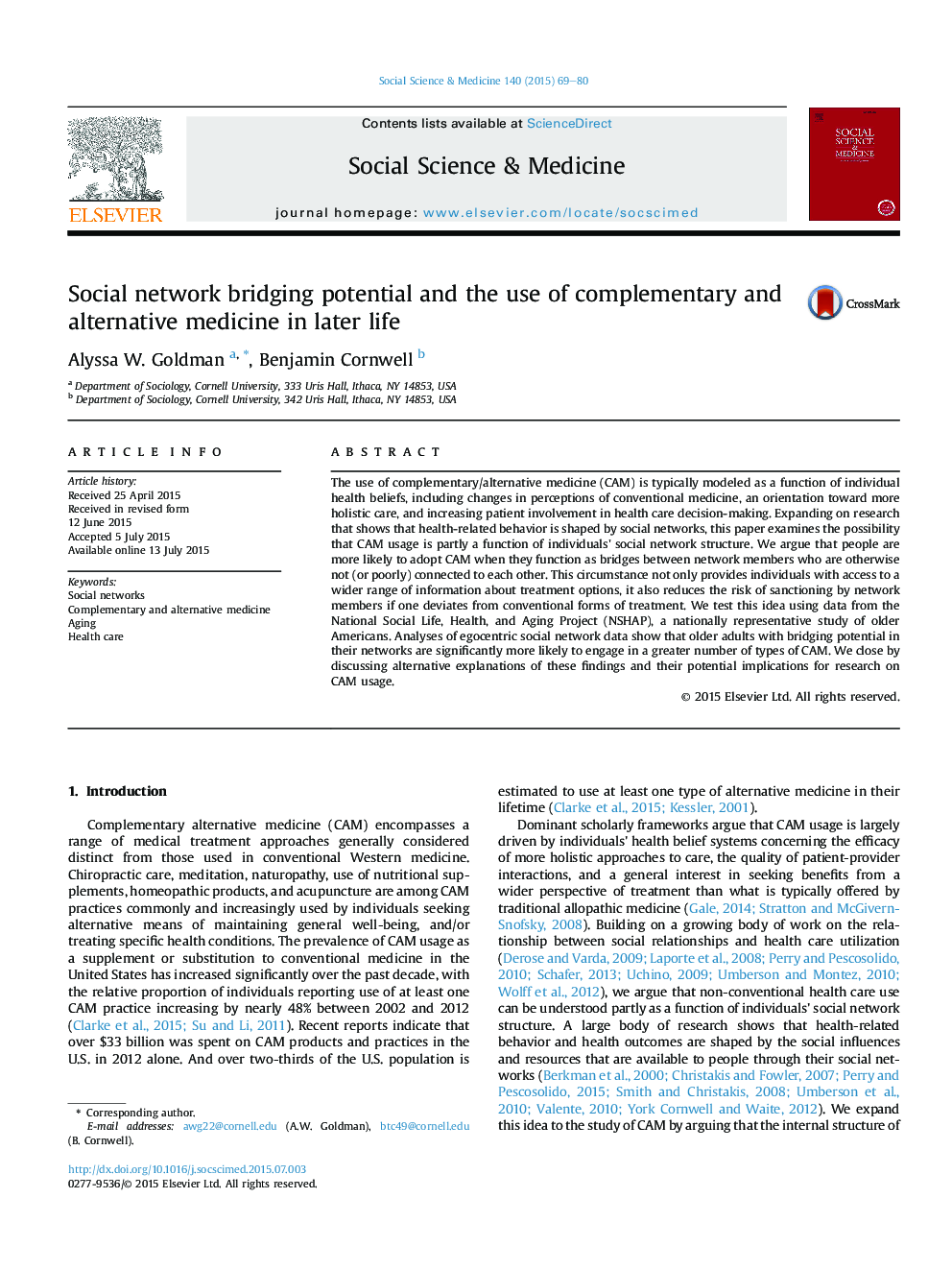| Article ID | Journal | Published Year | Pages | File Type |
|---|---|---|---|---|
| 7331988 | Social Science & Medicine | 2015 | 12 Pages |
Abstract
The use of complementary/alternative medicine (CAM) is typically modeled as a function of individual health beliefs, including changes in perceptions of conventional medicine, an orientation toward more holistic care, and increasing patient involvement in health care decision-making. Expanding on research that shows that health-related behavior is shaped by social networks, this paper examines the possibility that CAM usage is partly a function of individuals' social network structure. We argue that people are more likely to adopt CAM when they function as bridges between network members who are otherwise not (or poorly) connected to each other. This circumstance not only provides individuals with access to a wider range of information about treatment options, it also reduces the risk of sanctioning by network members if one deviates from conventional forms of treatment. We test this idea using data from the National Social Life, Health, and Aging Project (NSHAP), a nationally representative study of older Americans. Analyses of egocentric social network data show that older adults with bridging potential in their networks are significantly more likely to engage in a greater number of types of CAM. We close by discussing alternative explanations of these findings and their potential implications for research on CAM usage.
Related Topics
Health Sciences
Medicine and Dentistry
Public Health and Health Policy
Authors
Alyssa W. Goldman, Benjamin Cornwell,
